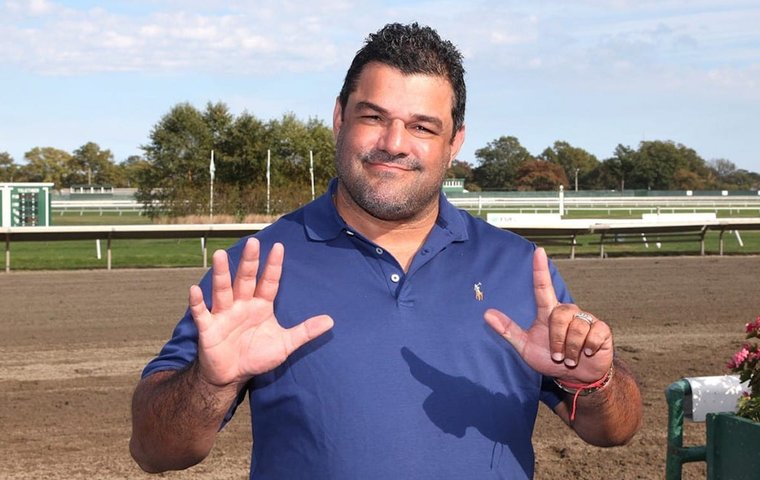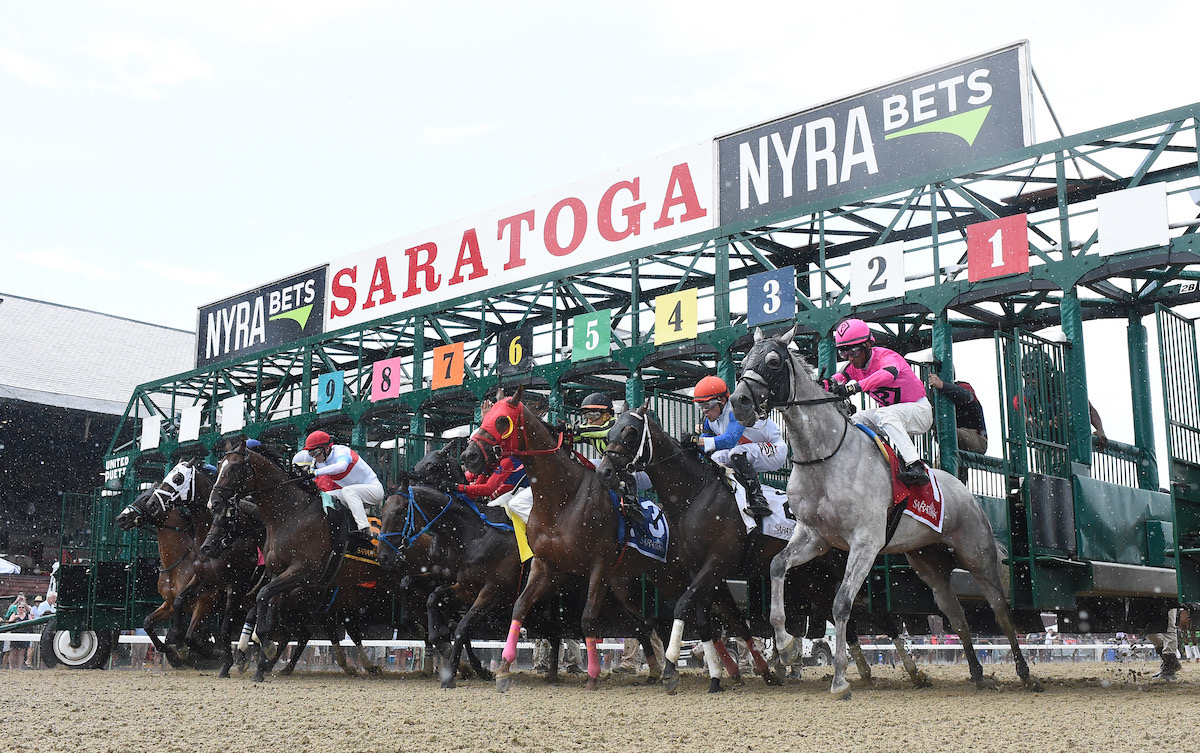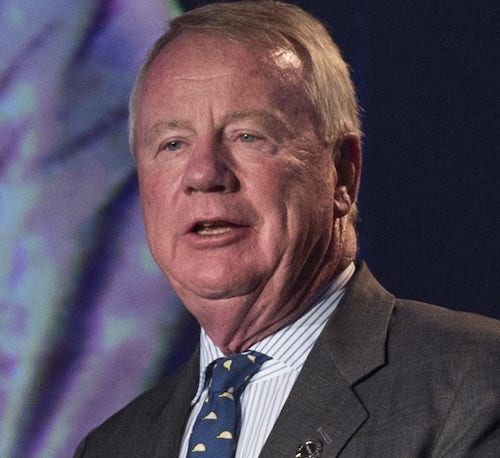
In the latest instalment of his fortnightly series, Charles Hayward explains why the Horseracing Integrity and Safety Authority is vital to the sport’s future
I spent the entire 40-day race meet in Saratoga Springs from July 15 through September 5. By any measure, it was a successful, record-breaking meet.
The New York Racing Association (NYRA) announced that all-sources wagering handle surged to a record $878,211,963 during the 2022 summer meet at the historic venue, eclipsing the previous record of $815,508,063 established in 2021 by 7.7%.
 The record setting 40-day meet generated average daily handle of $21,955,299 – also the highest such figure in the history of Saratoga. On-track handle, which includes New York residents wagering via NYRA Bets, was $152,274,728, or 10.5% higher than the $137,765,882 wagered on-track in 2021.
The record setting 40-day meet generated average daily handle of $21,955,299 – also the highest such figure in the history of Saratoga. On-track handle, which includes New York residents wagering via NYRA Bets, was $152,274,728, or 10.5% higher than the $137,765,882 wagered on-track in 2021.
Paid attendance in 2022 was 1,075,586, which is the seventh consecutive season with paid attendance north of one million (obviously excluding 2020 when fans were not permitted due Covid-19). Average daily attendance was 26,890.
All good so far. However, during the course of the meet, I heard a fair amount of grumbling from astute bettors that a number of horses seemed to be outrunning their established form or, in the case of two-year-olds, outrunning their pedigrees.
In fact, if you go back to the first anniversary of the indictments of 28 horse racing participants in March 2021, Bob Ehalt penned an article in the Bloodhorse under the headline ‘One Year After the Indictments, Cheaters Still Prosper’.
A continued blight
Ehalt wrote: “Cheating and incredibly high win percentages that were at the heart of the indictments continue to be a blight on racing’s landscape, even though the March indictments illustrated how a guilty plea could amount to five years in federal prison, bankruptcy in the face of staggering legal bills, and a lifetime ban from the sport.”
Here is another quote, this time from from Jockey Club chairman Stuart Janney in March 2021: “It’s great when they are caught in the regulatory framework and penalties become severe, but people need to go to jail. It’s not fun and games. Unfortunate ly, we continue to see things that look suspicious to us. To the extent that we have knowledge, we believe there is a long tail to this. Maybe people are more careful of how they are cheating, but I don’t see a lot of evidence that people have stopped cheating.”
ly, we continue to see things that look suspicious to us. To the extent that we have knowledge, we believe there is a long tail to this. Maybe people are more careful of how they are cheating, but I don’t see a lot of evidence that people have stopped cheating.”
Here is a similar quote from Jim Gagliano, president and COO of the Jockey Club, from that same timeframe: “We have not seen the correction we were hoping for after the indictments. Covid did interrupt the momentum, but I am kind of amazed at how some massive form reversals happen.”
You get the idea.
Serious speculation
It is now two and a half years since the original 28 indictments came down. In that first year, there was serious speculation from individuals with knowledge of the status of the cases that there would be more arrests and prosecution.
That has not happened and probably won’t happen until HISA assumes responsibility for the comprehensive and uniform rules and regulations outlined in HISA’s Anti-Doping and Medication Control (ADMC) Program. It needs to be pointed out that the 28 arrests and successful prosecutions had no cooperation or involvement with any state racing commissions or racetrack officials.
Due to the pandemic, cases have proceeded very slowly with the first two guilty pleas occurring in September 2020. To date, 22 individuals have pleaded guilty; the most serious offender in this category is Jorge Navarro, who began serving his five-year jail sentence in March 2022.
US Attorney Damian Williams said: ”Jorge Navarro’s case reflects failings, greed and corruption at virtually every level of the world of professional horse racing. For money and fame, corrupt trainers went to increasing extremes to dope horse under their care.
“By evading PED prohibitions and deceiving regulators and horse racing officials, participants in these schemes sought to improve race performance and obtain prize- money from racetracks throughout the United States and other countries, including in New York, New Jersey, Florida, Ohio, Kentucky and the United Arab Emirates, all to the detriment and risk of the health and wellbeing of the racehorses.”
Longest jail term
In addition to the prison sentence, Navarro was ordered to make a payment of restitution in the amount of $26,860,514 obtained through his fraudulent doping scheme. Navarro had the longest jail term among those who have pled guilty to date.
Florida veterinarian Seth Fishman and Lisa Gianelli, his salesperson of 18 years, were the only parties to date to plead not guilty. Found guilty, Fishman is serving 11 years in prison. Prosecutors say that over a 20-year period Fishman supplied illegal performance enhancing drugs to a multitude of trainers including Navarro.
In addition, Fishman must forfeit $13.5m, which is what he earned from his business of manufacturing performance-enhancing substances allegedly designed to evade detection in post-race testing. His sentence also includes a $250,000 fine.
Prosecutors introduced evidence showing that Fishman’s business earned millions of dollars. Lisa Gianelli was sentenced to three and a half years in prison and was ordered to pay a fine of $100,000 and to forfeit $900,000.
“For 18 years, Ms. Giannelli marketed and sold what she knew were illegal and powerful performance-enhancing drugs,” said Judge Mary Kay Vyskocil in the US District Court in New York.
How did this happen?
I have one question for the racing offices, the veterinarians and the stewards at the racetracks, as well the respective state gaming commissions. How could a veterinarian conduct a business for 18-20 years selling illegal performance-enhancing drugs that were specifically designed to avoid detection in post-race tests?
These drugs could also create deadly reactions in horses during a race. It is certainly possible that until HISA’s ADMC program goes into effect on January 1, 2023, cheating at US racetracks will continue.
State racing commissions and individual racetracks will be no more effective today in catching cheaters than they have been over the past two or three decades.
These recent convictions clearly indicate that the US racing industry has a serious horse drugging problem, and no-one can fully articulate the magnitude of the problem. However, let’s remember that there has never before been a prosecution in racing that generated $60m+ in fines and a minimum of 40 years of jail time for racing participants.
Also, below is an interesting chart that was developed for a report published by the Albany Times Union in March that demonstrates state by state over a five-year period how many drug violations each state has per 10,000 starters.
This is certainly something that the HISA Horseracing Integrity and Welfare Unit (HIWU) and the HISA Anti-Doping and Medication Control (ADMC) enforcement agency will be interested in reviewing. There are wide variations between states that must offer food for thought.
The headline, by the way, was 'N.Y. issues horse racing drug violations at lower rate than other states' – as the table below illustrates. New York issued only five drug violations for every 10,000 racehorse starts over a five-year period from 2016-2020 – vastly fewer than any other major US racing jurisdiction.
STATE-BY-STATE
Drug violations per 10,000 starts
Florida 72.5
Texas 55.5
California 27.4
Iowa 27.0
Kentucky 24.6
Oklahoma 23.4
Massachusetts 22.9
Washington 20.4
Ohio 14.6
Indiana 13.9
Maryland 13.5
Illinois 10.1
Minnesota 8.8
New York 5.0
Statistics: Matt Rocheleau and Vivien Ngo / New Albany Times Union
While I cannot vouch for the calculations done by the Times Union, I assume they got the information from the various state racing commissions. The wide range in the number of drug violations per 10,000 starts would suggest any model rule program in this area may struggle to be effective.
Here is what the Racing Medication and Testing Consortium (RMTC) says on its website: “The Racing Medication and Testing Consortium (RMTC), a group of 23 major horse racing industry stakeholders, was created after a December 2001 racehorse medication summit in Tucson, Ariz.”
Mission statement
Its mission statement says the organization strives “to develop and promote uniform rules, policies and testing standards at the national level; coordinate research and educational programs that seek to ensure the integrity of racing and the health and welfare of racehorses and participants; and protect the interests of the betting public.”
I would like to turn to HISA and important information that you can find on their website (hisaus.org) First, there are potted biographies for the following :
HISA staff, executives and outside counsel
Board of directors
Racetrack Safety standing committee members
Anti-Doping and Medication Control (ADMC) committee members
Drug Free Sport International (DFS)
Horseracing Integrity and Welfare Unit (HIWU)
Five-member Advisory Council to serve as the new ADMC enforcement agency for Thoroughbred racing
I think anyone involved in Thoroughbred racing should understand how HISA operates and where you can go to get the best people and information. Also, HISA maintains an informative news site that will keep you up to date on their latest developments.
One final point that I would like to address. I was a very strong advocate for retaining USADA as HISA’s Anti-Doping and Medication Control unit and wrote about my opinion a number of times.
However, retaining Drug Free Sport Inc. to work with HISA to build a record of success in its drug testing and enforcement partnerships is a much stronger strategy than retaining a third-party vendor for these essential services. Congratulations on this decisio n.
n.
One further suggestion: USADA has a sanction page on its website listing athletes who have received a sanction for any anti-doping rule or policy violation. They capture this information on each violation: Athlete, Sport, Substance/reason, Sanction Terms and Date Sanction announced. Regarding horse racing, I would include the owner, trainer and horse’s name. Let’s do it.
Congratulations are in order
Finally, I applaud HISA for two issues that I think are very important. In reading through the bios on the site, I counted at least 10 individuals that have had important anti-doping experience, which is surely critical for US racing.
I have spent 24 years in the Thoroughbred racing industry as president and CEO of the Daily Racing Form, president and CEO at NYRA and publisher of Thoroughbred Racing Commentary, and before now I do not recall any US Thoroughbred industry employees with a title that includes anti-doping responsibilities.
Second, it is very difficult to find women in important management positions in US horse racing. Reading through the bios on the website and seeing a few of these executives in action, it is most impressive.
In fact, one of your board members, Ellen McClain, was hired by me in 2009 as CFO at NYRA from the Hearst Corporation. Ellen was subsequently promoted to president at NYRA.
• View all Charles Hayward’s previous articles in his influential View from the Rail series
• Visit the Horseracing Integrity and Safety Authority website
‘A lightning strike of a racehorse’ – Jay Hovdey on the tragically brilliant Lost In The Fog
Bob's Business #1… How I met Steve Crist – then serendipity took over
What They're Thinking: Emma-Jayne Wilson – I can see the sport going in the wrong direction
Flightline: ‘The best I will ever ride’ says Flavien Prat – and there could be even more to come
Teenage sensation: introducing Seina Imamura, the girl who is taking Japanese racing by storm
View the latest TRC Global Rankings for horses / jockeys / trainers / sires


